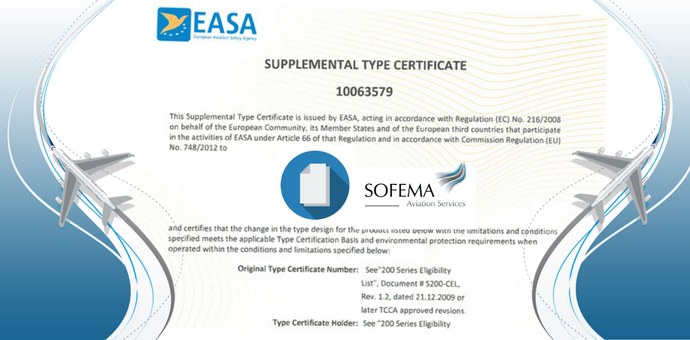Regulatory Background
STC applicants are required from EASA to demonstrate design capability in accordance with EASA Part 21 Subpart J; by way of derogation they can demonstrate design capability in the form of Alternative Procedures to Design Organisation Approval (AP to DOA).
EASA certifies this demonstration of design capability by issuing a Finding of Compliance to the applicant. The derogation is acceptable to EASA, Typically should be limited where the Agency finds it more appropriate for the conduct of …, supplemental type certification, …, approval of repair design.)
These procedures must be concise and limited to the information needed for quality and proper control of activities by the applicant/holder, and by the Agency.
Note – This concept is the implementation, in the context of specific projects, of procedures required in Subpart J DOA, to ensure that the applicant will perform relevant activities as expected by the Agency, but without the requirements on the organisation itself that can be found in Subpart J.
The establishment of these alternative procedures may be seen as a starting phase for a Subpart J DOA, allowing at a later stage, at the discretion of the applicant, to move towards a full Subpart J DOA by the addition of the missing elements.
Management of the STC / Major Change Certification Process
The initial process of applying to EASA for an STC approval should list the documents that are submitted at the time of the application.
This should include, as a minimum, the EASA Form 33, and the certification programme.
Validation of the Organisations scope of work.
Appropriate provisions should be put in the procedure to ensure the Project is within the current scope of work of the organisation.
Delivery Process
For a particular project and as part of the technical familiarisation, the applicant provides a certification programme plan that includes the following –
a) Description of the project and the kind of operations envisaged.
b) The proposed certification specifications, special conditions, equivalent safety findings and environmental protection requirements. The description on how compliance will be demonstrated, with proposed means of compliance. Document templates should be defined for the different types of compliance documents .
c) The description of the means of compliance should be sufficient to determine that all necessary data will be collected and compliance can be demonstrated.
d) A compliance checklist addressing each paragraphs of the type-certification basis and environmental protection requirements applicable to the project, with reference to the means of compliance and to the related compliance documents. If flight testing is anticipated as a means of compliance, the flight test organisation and procedures must be defined.
Aspects to be addressed in the procedure are:
Test aircraft
Personnel
Facilities and equipment
Deliverables
e) Identification of relevant personnel making decisions affecting airworthiness and environmental protection interfacing with the Agency, unless otherwise identified to the Agency
f) A project schedule including major milestones.
1/ The Organisation should be able to provide an overview of the design processes used by the organisation including the associated logic and time sequence.
2/ The procedure should highlight typical milestones of the organization design process, e.g. checkpoints, design reviews, showing of compliance, etc.
3/The control of time schedule, for the accomplishment of the tasks in due time shall be described. Responsible person for the preparation, recording, and update of the time-schedule shall be identified.
g) The organisation’s process for configuration control of the product “subject to the change” should be described including Configuration Identification, Configuration Control, Configuration Verification.
Note – The configuration control system shall be appropriate to the working methods and size/complexity of the organization. The system shall ensure that changes in the (Supplemental) Type investigation process during any phase are properly managed, so that correlated documentation is evaluated and updated as necessary. Any design changes or document updates (especially after STC approval) will be appropriately classified and approved.
Process to Create Compliance Documents
The type of document and the technical objectives for each document are determined at the beginning of the process; each compliance document should normally contain:
a) Numbering system to identify the compliance documents, with the corresponding certification programme. (Each compliance document should have a number and issue date.) – The issue control system should ensure the traceability between the various issues of each compliance document (e.g. by issue number and/or log register).
b) The reference of the certification specifications, special conditions or environmental protection requirements addressed by the document.
c) Data demonstrating compliance.
d) A statement by the applicant declaring that the document provides the proof of compliance for which it has been created.
e) The appropriate authorised signature.
f) The production of the documents is carefully managed all along the process, in accordance with the milestones defined in the certification programme.
Note If so agreed by the Agency, some compliance documentation may be produced after issuance of the final statement of compliance.
For additional information please see www.sassofia.com or email office@sassofia.com




